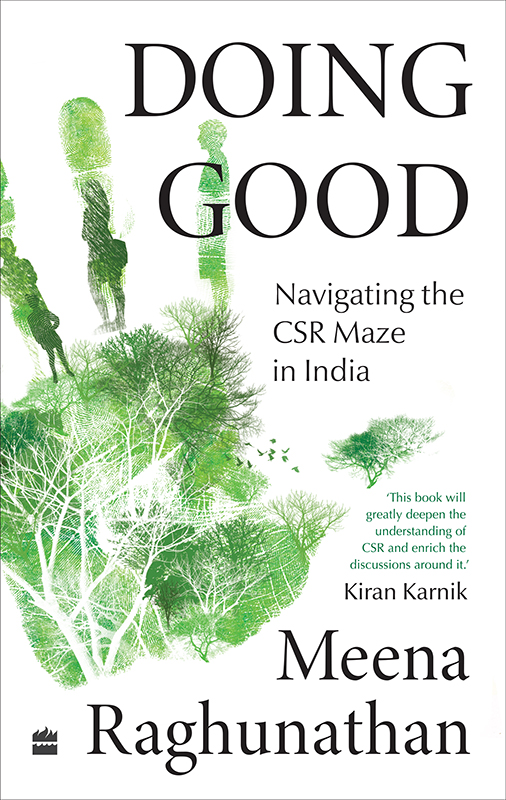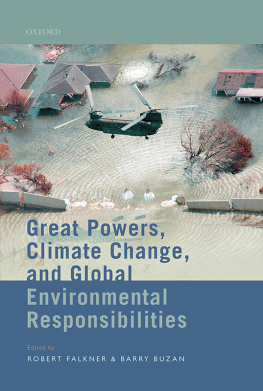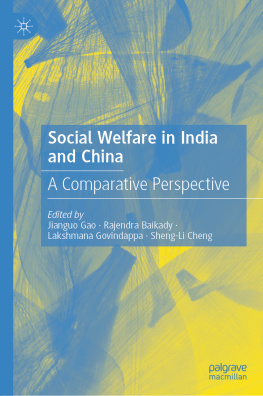Table of Contents


To Barnalee, the colours of joy!
Contents
F or some years now, the buzz word in corporate circles has been CSR (corporate social responsibility). While its cousin, ESG, is now competing and drawing a lot of attention, CSR continues to be important, relevant andof course(legally) necessary for many companies. The concept of social responsibility has, of course, long been around. Despite the generally prevalent imageespecially in Indiaof businessmen and companies being heartless, greedy and self-serving (further reinforced by their depiction in most commercial films), there are many who are sensitive and contribute to the greater good. Not all sheep are black!
Yet, the popular image of the rapacious businessmanof whom, too, there are innumerable examplesdrove the move to require corporates to contribute to social and developmental effort. Many felt that mandating this by law was not a good idea. Arguments ranged from this being equivalent to an additional tax burden, to saying it would deprive shareholders from their right to decide how the company profit or their dividend should be used. The political/economic Right opposed it as an unnecessary interference in business (the companys freedom to distribute profits as it chose), while many from the Left opposed it for being a way for the government to shirk its own responsibility by passing it on to the private sector.
Early efforts were limited to voluntary guidelines (which the government brought out in 2009, broadened and updated in 2011), but growing pressure resulted in a law being enacted in 2013. While it made some thingslike a Board Committee on CSRmandatory for large companies, the stipulation of spending 2% of profits (averaged over the last three years) was, in effect, voluntarythere being no enforcement of penalty for non-compliance. The concept was that of name and shame, for those who flouted this. New amendments in 2019 brought in penaltiesnot only monetary but also jail for the person responsible. Further changes in 2021 removed the jail sentences, but continued the monetary penalties.
This book covers all these aspects extensively, providing an excellent history of the evolution of governmental thinking on CSR. To put it in context, it begins with the history of the concept and the academic thinking over the years. It notes that not only the ancient Rig Veda, but every religion advocates giving (Islam has quantified this to the level of the individual). The book notes that SEBI mandated (in 2015) that the large companies also publish a Business Responsibility Report; this has been extended to more companies and its scope broadened (in 2021) to include sustainability. For this, it has defined the format and coverage. Thus, we see the evolution from somewhat fuzzy voluntary guidelines in 2009 to the Triple Bottom Line (people, planet, profits) in 2011 to the legal regimen in 2013 and then its tightening to include penalties for non-compliance.
One major criticism of the CSR law has been that it deals with only 2 per cent of the companys profits. It says nothing about the remaining 98 per cent, normore importantlyabout how the company makes the profits. This is akin to what I have elsewhere called the Tirupati Syndrome: commit all the sins you want, and then absolve yourself by putting a dakshina into the hundi in Tirupati.
A hypothetical example (which may not be too far from reality) is of a company that voraciously mines ore in forest land, cutting thousands of trees, displacing tribals from their ancestral homes, despoiling the land and polluting the environment. Will a CSR efforthowsoever largeto build schools and health facilities be a recompense? Are such projects a necessary part of development and progress, with the side-effects being assuaged through CSR spends? Are the ill-effects unavoidable collateral damage?
The Business Responsibility and Sustainability Report seeks to address the broader aspects of a companys operationsincluding how it makes its revenues/profitsbut it is moot whether it does so adequately. Many also argue that there are separate laws dealing with the environment, pollution, labour, safety, etc., as also with land acquisition; so, it is unfair to expect that CSR should take care of all aspects. One must admit, if grudgingly, that there is some validity to this argument. That other laws are inadequately enforced, that other regulators are lax in their job, cannot be an argument for putting all the onus on CSR.
As CSR amounts have ballooned (this book estimates the cumulative amount spent to be close to Rs 1,00,000 crore in the six years up to 2019-20), it has become a major source of funds for most NGOs. While many companies have their own Foundations/Trusts, to which much of the required CSR contribution goes, a substantial amount is available for other independent NGOs. With the severe tightening of controls on foreign (FCRA) funding to them, most of these NGOs now look to CSR funds to even continue their operations.
In this context, based on actual experience, there are some problems. One is that the donorsnow mainly companies dispensing CSR fundsare driving the agenda of the overall civil society. Thus, because of the preference to fund education (where over a third of CSR funding has gone), NGOs are forced to pivot and focus on this. For the last two years, attention has been on Covid, and while many companies gave generously for this, many other essential tasks and ongoing projects had to be abandoned for lack of financial support.
A second issue is the constant pressure for visible results and on evaluation. Thus, deeper change which takes many years of continuous effort (e.g., regarding the son-preference syndrome or gender discrimination or building cohesive communities), is sacrificed and quick-result, quantifiable-output projects are chosen (number of vaccinations administered, number of toilets built). The reporting and evaluation requirements of CSR regulations have only exacerbated the problem. The emphasis is on projects rather than programmes or processes. Of course, proposals for tribal rights or broader civil rights have no takers.
A new trend (especially in public sector companies) requiring competitive bidding for projects conceived by the corporate, has created other problems. First, the project conceiver (the company) and the implementor (the NGO) are differentnot an ideal situation. Second, NGOs are not used to responding to tenders. Many have had to hire someone just to do this. Many tenders allow only a fixedand inadequatepercentage as overhead, resulting in financial problems for the NGO. Third, evaluating soft capabilities (commitment, for example) is difficult, especially for corporate managers in the donor company. Finally, there are tax issues regarding GST, about which the rules are ambiguous.
In the last few years, some amount of CSR funds has gone into government programmes like Swachh Bharat and to PM CARES (effectively, to use an oxymoron, a government NGO), putting a strain on NGO finances already under stress because of FCRA regulations. One hopes that corporate donors will again shift focus back to NGOs who have long experience of field work and enjoy a rapport with the intended beneficiaries.
Despite these issues, CSR has been an increasingly important support for NGOs and, more broadly, for various development initiatives, especially in the areas of education and health. In the process, companies and their employees have doubtless developed greater sensitivity to social issues. Even when CSR has been used to indirectly promote brands (and is really as much a marketing spend as a CSR one), the very fact that they pick a certain area (e.g., environment) and blow their horn about the work that they have done, it is an indication of recognising its importance.












